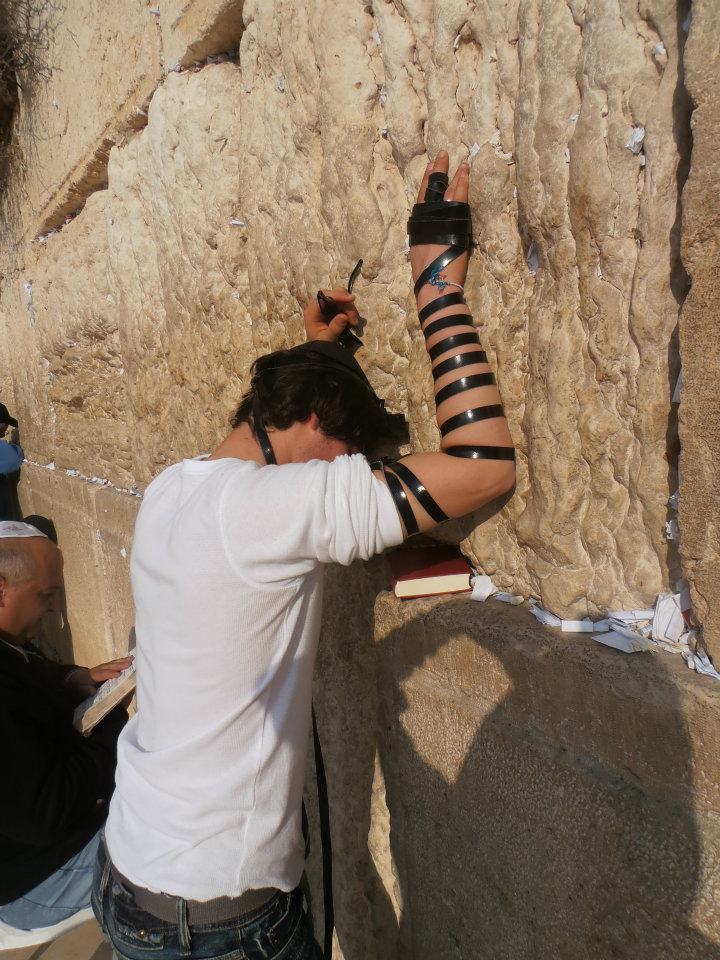Some say that the Jewish spark is the indescribable feeling that comes from the combined understanding of the existence of a common Jewish history, the value placed on family unity, and the “messianic” Jewish-harbored drive to change the world. Yet, as I lay in my bed in Jerusalem on the morning of my Bar Mitzvah, I had no idea that such a spark even existed.
“Why did you bring me here, Dad?” I thought to myself. I was not happy in Israel, this strange new place without any of my friends. Yet looking back, Jerusalem would play host to the biggest revelation of my life as a Jew. Jerusalem would witness the day my Jewish spark ignited.
Arriving at the Kotel (Western Wall), I met the rabbi who was to lead me into my Bar Mitzvah. He introduced himself as Rabbi Aaron, then silently wrapped tefillin (phylacteries) around my arm and on my head. I stared blankly during the process.
“Repeat after me…Baruch Atah...” said Rabbi Aaron.
I repeated after him. As I uttered the foreign Hebrew words, I paid more attention to Rabbi Aaron. I noticed his tallit (prayer shawl) covering his head. His hands were shaking as he touched the Torah scroll and then the Western Wall.
Then it hit me. I realized that I shared a common bond with Rabbi Aaron — a historical bond. We shared a common history, starting from the Exodus from Egypt and the giving of the Torah on Mt. Sinai. The common history and hardship endured by our ancestors created this unspoken bond between us.
I turned to Rabbi Aaron, and I saw his face. Tears rolled down his cheeks as he sang the prayers. I saw in him both utter pain and joy. My own tears began to flow and my hands shook. I felt the pain of thousands of years of hate and malice. I felt the joy of us standing there that day, alive and having survived thousands of years of torture. Although some argue that calling the Kotel the Wailing Wall perpetuates the negative image of Jews crying their hearts out to an inanimate wall (an image largely promoted by non-Jews), for me, the Western Wall is a place where Jews can come to shed our sorrows and fears, and be free to hope for and believe in what we want. As such, it will forever be the Wailing Wall — at least to me.
That day, I finally saw myself as a member of the Jewish people, sharing in their immortal strength. As Mark Twain wrote, “All things are mortal but the Jew; all other forces pass, but he remains. What is the secret of his immortality?” The secret of such Jewish immortality lies in the Fifth Commandment: “honor your mother and father.” Jewish culture places an emphasis on the family unit, which in turn helps to preserve the essence of what it means to be Jewish. The importance of the family unit, coupled with teaching and instilling the values of the Jewish tradition to our children, has kept our people alive, safe and connected, and is in turn what has allowed the cycle of such Jewish family life to continue. It was at that moment, standing at the Kotel, that I realized the value of what my father sought to teach me by bringing me to this holy and foreign city.
During the ceremony, having suddenly tapped into the rich yet painful history of my Jewish ancestors, I was also overcome by a deep desire to change this world for the better. In the book We Jews, the internationally-regarded Rabbi Adin Steinsaltz writes that “every Jew harbors in some way a spark of the Messiah […] as the means of changing and reforming the entire world […] It is a motivating, stimulating force, and it serves as a means to create things or to persist in doing them.”
Certainly, by the time the ceremony ended, this “motivating, stimulating” force to which Rabbi Steinsaltz refers had taken hold of me. I felt a new, deeply powerful connection to the Jewish people, and the pieces of Judaism that connect us all — the existence of a common Jewish history, the Jewish value of family unity, and the “messianic” Jewish-harbored drive to change the world. My Jewish spark had ignited at last.
I turned around to see my dad standing behind me, and realized that he had been watching me the entire time. I ran up to him and hugged him with all my might, saying the only words I could, “Thank you.”
While this experience was my own, it is not unique. I had always possessed a Jewish identity, albeit underemphasized, as well as a theoretical sense of modern Zionism. However, to support the Jewish state and to experience the power of partaking in Jewish tradition at Israel’s holy cites are two very different things. Every year, numerous organizations allow Jewish students to embark on a journey to Israel — their ancestral homeland. Birthright, MASA, March of the Living … the list goes on. All these trips to Israel serve the same purposes: to allow Jewish students the opportunity to experience Israel, to connect to their history and their people, and, most importantly, to kindle their Jewish spark.
___________________________________________
This is the third installment of “Jews United,” a 3-part series identifying and expressing the concepts of Jewish identity, the Jewish spark, and how they relate to the importance and survival of Israel and the Zionism behind it. Check out Parts 1 and 2.

